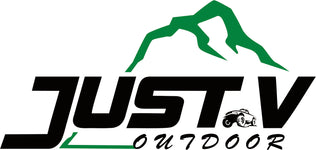
Running Board Pro and Con: What You Should Know
When it comes to making your vehicle better, running boards are one of the most useful add-ons available. These flat steps that run along the sides of trucks, SUVs, and vans do more than just look good. JustV's car running board combines both style and functionality, transforming your vehicle's appearance while providing practical benefits. Understanding both the good and bad points of running boards will help you decide if they're right for your vehicle.
How Running Boards Have Changed
Running boards have changed a lot over time. In the early days of cars, they were standard features because vehicles sat much higher off the ground. As designs improved, running boards became optional extras rather than necessities.
Today's options include fixed running boards, fold-away versions, and ones with lights for nighttime use. Materials have improved too - from simple metals to aluminum, fiberglass, and tough plastics that don't rust and keep weight down.
Main Benefits of Running Boards
Easier Vehicle Access
The top reason to get running boards is to make your vehicle easier to access. For tall trucks and SUVs, the big step from ground to cabin can be challenging. Running boards create a middle step that makes getting in and out simpler.
This helps kids, shorter adults, and older people who find the high step difficult. It reduces knee and hip strain for everyday use.
Protects Your Vehicle's Sides
Running boards act as a shield for your vehicle's sides. They block road debris, rocks, and other things that could damage your doors. When driving on gravel roads or off-road trails, they catch flying debris before it hits your paint.
In tight parking spots, they can take small bumps that might otherwise dent or scratch your doors. This protection alone could save hundreds in repair costs.
Better Roof Access
For people who carry gear on roof racks, running boards provide a steady platform to reach the roof more easily. Loading bikes, kayaks, or camping gear becomes simpler when you have a stable step to use.
This means no more keeping a separate step stool and less risk of falling when trying to reach your roof rack.
The Downsides to Consider
Less Ground Clearance
Adding running boards means less space between your vehicle and the ground. This can be a problem when driving over rough terrain, deep snow, or steep hills. Off-road drivers might find this limiting in tough conditions.
Some boards stick out more than others, so choosing one that sits closer to your vehicle helps. Fold-away running boards work well if you switch between off-road driving and regular use.
Collects Dirt and Mud
Running boards often gather mud, snow, and road dirt. This makes your vehicle look dirty and can get on clothes when people step in and out. In winter, ice buildup can make them slippery.
You'll need to clean them regularly to prevent rust and keep them looking good. Some have drainage holes to help, but all types need extra cleaning.
Adds Weight
The extra weight of running boards, especially steel ones, can slightly reduce fuel economy. While usually minimal—often less than 1-2%—it's worth considering if maximum efficiency matters to you.
Lighter aluminum or plastic options help with this issue. For most drivers, the benefits outweigh this small efficiency loss.
Choosing the Right Running Boards
Material Options
Your choice of material affects performance, durability, and maintenance. Aluminum offers good rust resistance and light weight. Steel provides maximum strength but needs protective coating. Plastic and composite options resist weather damage and often have built-in grip.
Consider your local weather—vehicles in coastal or snowy areas need rust-resistant materials, while extreme temperatures can affect certain plastics.
Style Choices
Running boards come in various styles. Traditional boards extend the full length with a flat stepping surface. Nerf bars are tube-shaped with stepping pads at doors. Side steps are shorter platforms just at door locations.
Your vehicle's style should guide this choice. Modern trucks often look best with textured running boards that match body lines, while older vehicles might look better with smooth designs.
Installation Tips
Many running boards bolt on using factory mounting points, with no drilling needed. These preserve resale value and make installation easier. Others might need extra brackets depending on your vehicle.
Professional installation costs about $150-300 beyond the boards themselves. Many handy owners can install them with basic tools. Make sure the weight rating matches your needs—most support 300-500 pounds, with heavy-duty models holding 600+ pounds.
Long Term Value
Resale Impact
Well-chosen running boards generally add value when selling your vehicle, especially for larger models. They're an upgrade that appeals to many buyers, particularly families.
Quality boards return good value through daily use and eventual resale. Basic models start around $200-300, while premium powered fold-away versions can cost over $1,500.
Durability and Warranty
Good running boards should last through typical vehicle ownership. Most manufacturers offer 3-5 year warranties against defects, with premium brands covering finish issues too.
Powder-coated finishes last longer than paint, especially in harsh weather. Stainless hardware prevents ugly rust streaks on your vehicle's sides.
Conclusion
Running boards make a smart addition to trucks, SUVs, and vans, offering better accessibility while protecting your vehicle. While there are some drawbacks like lower clearance and maintenance needs, the benefits outweigh these concerns for most daily drivers. By choosing materials and styles that match your vehicle and how you use it, running boards can improve your driving experience for years. Whether you want easier access, vehicle protection, or better looks, running boards offer practical benefits every day.
FAQs
How much weight can running boards hold?
Most support 300-500 pounds of static weight. Heavy-duty models can handle 600+ pounds. Weight capacity when moving is typically lower than when standing still.
Are fold-away running boards worth the extra money?
Fold-away boards offer the best mix of access and clearance by extending only when doors open. While more expensive ($1,000-1,500 installed), they're valuable if you drive off-road regularly but still need easy entry.
Do I need different running boards for different weather conditions?
While you don't need separate sets for different seasons, your local climate should influence your choice. In snowy areas, choose boards with good drainage and grip surfaces. In hot, sunny regions, pick UV-resistant materials that won't get too hot to touch.
